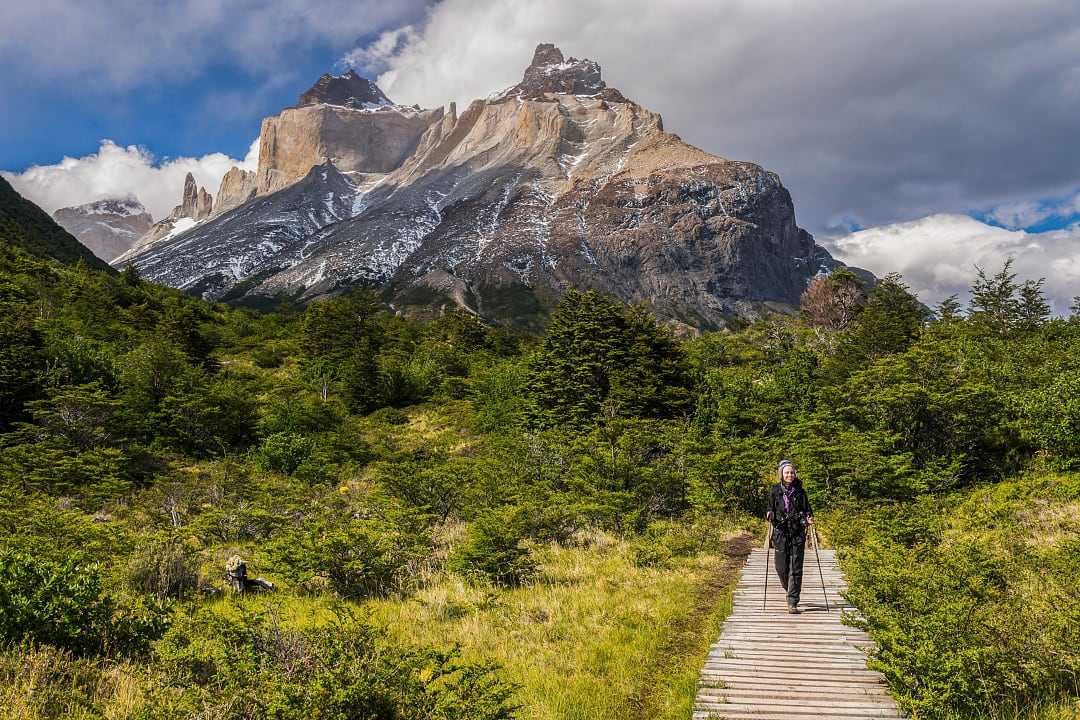High, Low, & Shoulder Seasons: What to Expect & When to Travel

Torres del Paine National Park in Chilean Patagonia
Whether looking for the right time to tour Italy’s famous coastline or trek the renowned trails of Patagonia, the best time to see lions on the savannah or cherry blossoms in Japan, understanding what to expect during the different travel seasons can help you get exactly what you want most out of your vacation.
The time of year you travel can be essential to seeing and doing what you want, and there are good reasons to consider the benefits of travel across the different times of the year.
Learn more about what to expect during the high, low, and shoulder seasons with this helpful guide.
What is High Season?

Positano, Italy
The high season, sometimes referred to as the peak season, is the busiest time of year for a travel destination. It often coincides with large crowds and higher rates, from hotels to transportation, and guides.
Because of the popularity of this time of year, high season is often associated with the “best time” to visit a destination. Often, it corresponds with the best weather, attracting travelers eager to enjoy a destination and activities associated with the right temperatures.
Seasonality can play a big role in your trip, depending on the type of vacation you want. For beach destinations, the high season can coincide with dry, warm weather, just like the winter can mean peak season for a ski destination known for snow, slopes, and cozy accommodations.
High season can also refer to the time when the largest number of travelers are able to visit a specific destination, rather than solely the best time to visit. For example, many families travel to Europe in summer, not necessarily because summer is the best time to visit Europe, but because it is the time when children are out of school and parents take a vacation.
Travel during the high season if the time is right for you or if there is a specific experience that takes place then. While much of Europe sees a huge influx of travelers during summer because of school breaks, Japan sees hordes of local and international tourists in spring, who arrive to view the cherry blossoms.
By focusing on your goals and interests, you can plan for the crowds or around them. This makes travel during the high season a much more pleasant experience.
What is Shoulder Season?

Jardin de Tuileries in Paris, France
Shoulder season in travel is typically defined as the time between high and low season for a given destination. The timespan depends on the location and the popularity of travel during different seasons that can be affected by variables like the weather, festivities, and activities.
The shoulder season generally sees a lull in tourist crowds, while still edging the popular seasons to ensure open restaurants, shops, resorts, and activities. Outside of ski season, many businesses may close. Outside of beach season, islands and coastal businesses often shutter their doors. In many destinations, more travelers are visiting during the shoulder season to avoid the high-season crowds and enjoy traveling at a slower pace.
Overall, the shoulder season represents times between specific weather conditions and seasonal activities that draw travelers to specific destinations. For instance, France has a high season in summer, a shoulder season in fall, and then another high season in winter, with travelers arriving to ski in the Alps. Tanzania has a high season in the dry months from June to September, a shoulder season from October until February, and a low season during the high rains from March to May.
When traveling during shoulder season you can most often enjoy the best seasonal experiences without large crowds. Prices are often lower during shoulder season, popular destinations have more capacity, you won’t compete for a limited number of reservations, and the weather is typically pleasant.
Travelers visiting during shoulder season usually have more flexible schedules and choose to travel at a different time and pace, while looking for a more personalized experience.
What is Low Season?

Masai Mara, Kenya
The low season is also named “off-season” and is characterized by a smaller number of tourists visiting a destination. Lines are shorter, rates generally drop, and the weather may be less predictable.
The term low season is often connected to a destination’s weather, with fewer travelers visiting Kenya for safari during the rainy season or smaller international crowds traveling to Patagonia in the winter.
While the weather plays an important role, it is not the only factor in establishing the low season. Fewer flights or transportation to a destination, closed seasonal businesses, and fewer tours can also impact low-season travel.
When weather may be a deciding factor in your travel plans, such as visiting an island destination and wanting good weather for the beach, low season is often another name for the rainy season. However, “rainy season” is often inaccurate, creating a vision of endless rain that ruins a beach vacation. Destinations like Costa Rica and Tahiti are known for having rainy seasons, but even during the wet months, showers are often heavy but fast, allowing plenty of time for adventure, exploration, and relaxation.
Travel during the low season can feel like the opposite of a tour during the high season. Fewer crowds, attentive service, and more favorable pricing are compelling reasons to travel away from travel peaks. If the weather is not an important factor for your trip, the low season often offers a fantastic escape from the expected long lines, crowds, and higher prices of the high season.
The low season may also give you a more relaxing ambiance through which to discover your chosen destination. Locals are typically more welcoming to visitors during off-season travel and the smaller crowds make it easier to travel at your preferred pace, without rushing to beat large groups to a particular monument, museum, or restaurant.
When Should You Travel?

in Grampians National Park in Victoria, Australia
The best time of year to travel is all about you. While the shoulder season may sound like the best time to visit Australia or India, it won’t matter if you are unable to travel during those months of the year.
You may have a list of places you wish to visit each year or perhaps you travel based on the time of year you have available. Depending on your interests, goals, needs, and expectations, you can have an incredible experience on your vacation during the high, shoulder, or low seasons.
Working with a travel specialist can give you more in-depth and local information, as well as help you plan around any foreseen challenges to ensure your best trip, no matter the season.
Book Your Trip for Your Preferred Travel Season

Himeji, Japan
Whether looking for great weather or the least crowds, finding the best time to visit a destination can make the difference between a good and a great vacation. From cultural experiences to pristine beach getaways, wine and food tours to remarkable trekking excursions, what you want to experience could directly affect when you travel.
No matter the type of experience you want, you can find more information and new insights on select destinations with our guide to the best places to travel by month.
Life-Enriching Travel Designed Just for You
- 1
Trips curated by the world’s top destination experts
- 2
Concierge-level service leading up to and during your trip
- 3
Unique, exclusive experiences and insider access





